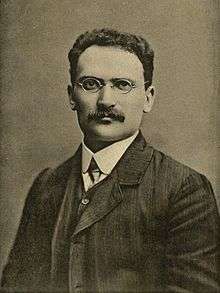Types of Zionism

The principal common goal of Zionism was to establish a homeland for the Jewish people. Zionism was produced by various philosophers representing different approaches concerning the objective and path that Zionism should follow.
Political Zionism
Political Zionism was led by Theodor Herzl and Max Nordau in Russia. This Zionist Organization approach espoused at the First Zionist Congress aimed at establishing for the Jewish people a publicly and legally assured home in Palestine, which among other items, included initial steps to obtain governmental grants from the established powers that controlled the area.[1]
Practical Zionism

Led by Moshe Leib Lilienblum and Leon Pinsker and molded by the Hovevei Zion organization. This approach opined that firstly there is a need in practical terms to implement Jewish immigration to the Land of Israel, Aliyah, and settlement of the land, as soon as possible, even if a charter over the Land is not obtained.
Synthetic Zionism
Led by Chaim Weizmann, Leo Motzkin and Nahum Sokolow, an approach that advocated a combination of the preceding two approaches.
Labor Zionism

Another division between these generic types of Zionism derives from ideological differences that do not necessarily have to do with Zionism itself, but rather a comprehensive world view held by the people of these different groups regarding the character of the future Jewish State. Led by Nachman Syrkin, Ber Borochov, Haim Arlosoroff, and Berl Katznelson:
As opposed to Practical and Political Zionism, Labor Zionism desired to establish an agriculturist society not on the basis of a private-bourgeoisie society, but rather on the basis of moral equality.
Revisionist Zionism

Revisionist Zionism was initially led by Ze'ev Jabotinsky and later by his successor Menachem Begin (later Prime Minister of Israel), and emphasized the romantic elements of Jewish nationality, and the historical heritage of the Jewish people in the Land of Israel as the constituent basis for the Zionist national idea and the establishment of the Jewish State. They supported Liberalism and particularly Economic liberalism, and opposed Labor Zionism and the establishing of a communist society in the Land of Israel. Revisionist Zionism opposed any containment of Arab terror and supported firm military action against the Arab gangs that had attacked the Jewish Community in the Land of Israel. Due to that position, a faction of the Revisionist leadership split from that movement in order to establish the underground Irgun. This stream is also categorized as supporters of Greater Israel.
Cultural Zionism

Led by Ahad Ha'am (Asher Zvi Hirsch Ginsberg). Cultural Zionism opined that the fulfillment of the national revival of the Jewish People should be achieved by creating a cultural center in the Land of Israel and an educative center to the Jewish Diaspora, which together will be a bulwark against the danger of assimilation that threatens the existence of the Jewish People.
Revolutionary Zionism
Led by Avraham Stern, Israel Eldad and Uri Zvi Greenberg. Revolutionary Zionism viewed Zionism as a revolutionary struggle to ingather the Jewish exiles from the Diaspora, revive the Hebrew language as a spoken vernacular and reestablish a Jewish kingdom in the Land of Israel.[2] As members of Lehi during the 1940s, many adherents of Revolutionary Zionism engaged in guerilla warfare against the British administration in an effort to end the British Mandate of Palestine and pave the way for Jewish political independence. Following the State of Israel's establishment leading figures of this stream argued that the creation of the state of Israel was never the goal of Zionism but rather a tool to be used in realizing the goal of Zionism, which they called Malkhut Yisrael (the Kingdom of Israel).[3] Revolutionary Zionists are often mistakenly included among Revisionist Zionists but differ ideologically in several areas. While Revisionists were for the most part secular nationalists who hoped to achieve a Jewish state that would exist as a commonwealth within the British Empire, Revolutionary Zionists advocated a form of national-messianism that aspired towards a vast Jewish kingdom with a rebuilt Temple in Jerusalem.[4] Revolutionary Zionism generally espoused anti-imperialist political views and included both Right-wing and Left-wing nationalists among its adherents. This stream is also categorized as supporters of Greater Israel.
Religious Zionism
Led by Yitzchak Yaacov Reines, founder of Mizrachi (religious Zionism) and by Abraham Isaac Kook. Religious Zionism maintained that Jewish nationality and the establishment of the State of Israel is a religious duty derived from the Torah. As opposed to some parts of the Jewish non-secular community that claimed that the redemption of the Land of Israel will occur only after the coming of the messiah, who will fulfill this aspiration, they maintained that human acts of redeeming the Land will bring about the messiah, as their slogan states: "The land of Israel for the people of Israel according to the Torah of Israel" (Hebrew: עם ישראל, תורת ישראל וארץ ישראל). Today they are commonly referred as the "Religious Nationalists" or the "settlers", and are also categorized as supporters of Greater Israel.
See also
References
- ↑ Jewish Virtual Library: The First Zionist Congress and the Basel Program
- ↑ Israel Eldad, The Jewish Revolution, pp. 47–49
- ↑ Israel Eldad, The Jewish Revolution, pp. 45
- ↑ Israel Eldad, Israel: The Road to Full Redemption, p. 37 (Hebrew) and Israel Eldad, "Temple Mount in Ruins"
- Zion and State: Nation, Class and the Shaping of Modern Israel by Mitchell Cohen
External links
- Political Zionism, Jewish Virtual Library
- Practical Zionism, Jewish Virtual Library
- Synthetic Zionism, Jewish Virtual Library